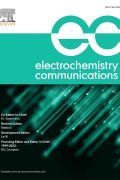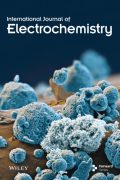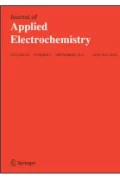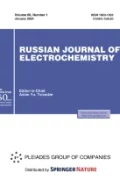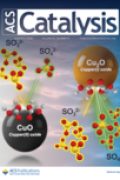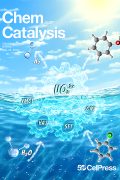OpenAlex Research Search
Keywords
Author
Loading...
Electrochemistry is the branch of physical chemistry concerned with the relationship between electrical potential difference and identifiable chemical change. These reactions involve electrons moving via an electronically-conducting phase (typically an external electrical circuit, but not necessarily, as in electroless plating) between electrodes separated by an ionically conducting and electronically insulating electrolyte (or ionic species in a solution)....Wikipedia
Conferences
Books
E-Books
Use the Call Number/s to browse books on shelves available on first floor of library You can access books via Library Catalogue and check availability.
List of some Books available in library is given below:
List of some Books available in library is given below:
The HDFC Library provides access to wide range of eBooks to support your research journey.
Use this E-Book guide to know how to access eBooks
The ProQuest eBooks central is major database having Environmental Studies and Ecology eBooks. List of some eBooks is given below:
(Note: To access books the below given books you must be logged in to eLibrary portal)
Use this E-Book guide to know how to access eBooks
The ProQuest eBooks central is major database having Environmental Studies and Ecology eBooks. List of some eBooks is given below:
(Note: To access books the below given books you must be logged in to eLibrary portal)
Journals
Referred Articles
| Article | DOI |
|---|---|
| A Packed Graphite Cell for Thin-Layer Electrochemistry | link |
| Electrochemistry and Catalysis by Myoglobin in Surfactant Films | link |
| Electrochemistry at One Nanoparticle | link |
| Molecular electrochemistry and electrocatalysis: a dynamic view | link |
| Astro-electrochemistry of NH3 clusters and ice: e− trapping, stability, and electron transfer | link |
| Probing time-resolved plasma-driven solution electrochemistry in a falling liquid film plasma reactor: Identification ofHO2−as a plasma-derived reducing agent | link |
| Spin-dependent electrochemistry and electrochemical enantioselective recognition with chiral methylated bis(ethylenedithio)-tetrathiafulvalenes | link |
| 67 Fipronil In Vitro Metabolism Revisited: Microsomal Incubations, Electrochemistry, and Their Relevance to Human Biomonitoring | link |
| Electrochemistry from first-principles in the grand canonical ensemble | link |
| General cross-coupling reactions with adaptive dynamic homogeneous catalysis | link |
| Foldamer Catalysis | link |
| Radical NHC Catalysis | link |
| Iodanyl Radical Catalysis | link |
| General cross-coupling reactions with adaptive dynamic homogeneous catalysis | link |
| Multistate Dynamics and Kinetics of CO2 Activation by Ta+ in the Gas Phase: Insights into Single-Atom Catalysis | link |
| d-p Hybridization-Induced TrappingCouplingConversion Enables High-Efficiency Nb Single-Atom Catalysis for LiS Batteries | link |
| The Progress and Outlook of Metal Single-Atom-Site Catalysis | link |
| Heterogeneous Iridium Single-Atom Molecular-like Catalysis for Epoxidation of Ethylene | link |
| An Overview of Metal Density Effects in Single-Atom Catalysts for Thermal Catalysis | link |
| Ethylene Methoxycarbonylation over Heterogeneous Pt1MoS2 Single-Atom Catalyst: Metal-Support Concerted Catalysis | link |
| Inter‐Metal Interaction of Dual‐Atom Catalysts in Heterogeneous Catalysis | link |
| Use of Carbon Nitrides as Photoactive Supports in Single‐Atom Heterogeneous Catalysis for Synthetic Purposes | link |
| Geminal-atom catalysis for cross-coupling | link |
| A Dual Cobalt and Photoredox Catalysis for Hydrohalogenation of Alkenes | link |
| Why Is CC Coupling in CO2 Reduction Still Difficult on Dual-Atom Electrocatalysts? | link |
| Dual-Atom Catalyst with N-Colligated Zn1Co1 Species as Dominant Active Sites for Propane Dehydrogenation | link |
| Comprehensive Understanding of the Thriving Ambient Electrochemical Nitrogen Reduction Reaction | link |
| Revised Nitrogen Reduction Scaling Relations from Potential-Dependent Modeling of Chemical and Electrochemical Steps | link |
| Revisiting the Electrochemical Nitrogen Reduction on Molybdenum and Iron Carbides: Promising Catalysts or False Positives? | link |
| Impact of Vacancy Defects on Electrochemical Nitrogen Reduction Reaction Performance of MXenes | link |
| Phosphomolybdic acid regulated the defective metal-organic framework UiO-66 for electrochemical nitrogen reduction reaction | link |
| Electrochemical trends of a hybrid platinum and metal–nitrogen–carbon catalyst library for the oxygen reduction reaction | link |
| Pd–Mo bimetallic catalysts for electrochemical reduction of carbon dioxide to carbon monoxide | link |
| Electrochemical Reduction of Carbon Dioxide to Solid Carbon: Development, Challenges, and Perspectives | link |
| Unraveling the rate-limiting step of two-electron transfer electrochemical reduction of carbon dioxide | link |
| Photochemically produced SO2 in the atmosphere of WASP-39b | link |
| Exploring the photochemistry of OAlOH: Photodissociation pathways and electronic spectra | link |
| Ultrafast photochemistry and electron-diffraction spectra in n → (3s) Rydberg excited cyclobutanone resolved at the multireference perturbative level | link |
| The photochemistry of Rydberg-excited cyclobutanone: Photoinduced processes and ground state dynamics | link |
| Spectroscopic characterization and photochemistry of HC3N− and CH3C3N−: implications for ion chemistry in Titan's atmosphere | link |
| Synthesis and Full Characterization of One Organometallic Polyoxometalate-Based Copper(I)-Alkene Complex | link |
| Ionic Liquids in Metal, Photo-, Electro-, and (Bio) Catalysis | link |
Recent Trends
Electrochemical technology
|Homogeneous catalysis|
Hydrogenation|
Desorption
|Chemisorption
Single-atom-layer catalyst
|Loading density of active atoms
|Utilization efficiency of noble metals
|Electrocatalytic applications
|Structure-activity relationship
Electrocatalys|
Reaction mechanism|
Organic Synthesis|
Catalysis|
Nucleophile
Internet/Blog Articles
| Title | Access |
|---|---|
| Electrochemistry Blog Posts | link |
| Importance of Integrated EIS on Every Channel | link |
| 8th International Symposium on Carbon for Catalysis, CarboCat–VIII | link |
| RSC Activities at recent NGCS13 conference in Xiamen, China | link |
| Junhao Huang – PhD visit opportunity LIKAT and UK Catalysis Hub | link |
| Nanocatalysis: A Nanoscale Horizons, Nanoscale, and ChemComm Collection | link |
| Materials Chemistry A: themed issue on single-atom catalysis | link |
| Photochemistry illuminates new synthetic routes | link |
| Congratulations to the winners of the Photochemistry School for the Spanish Association of Bioinorganic Chemistry | link |


